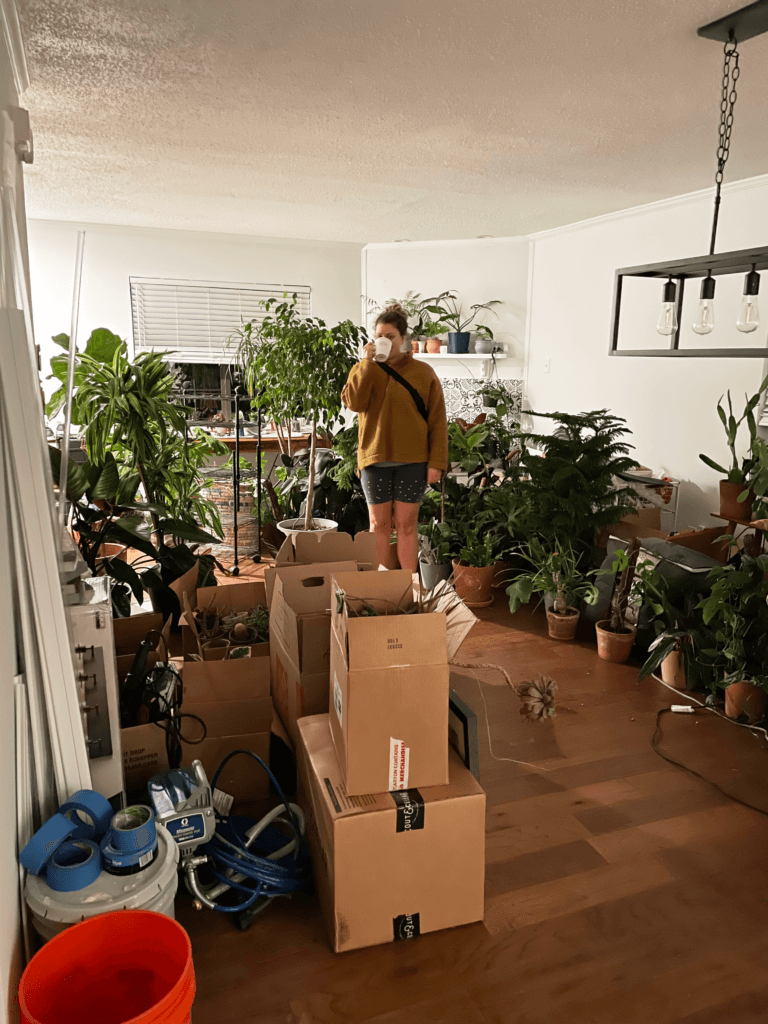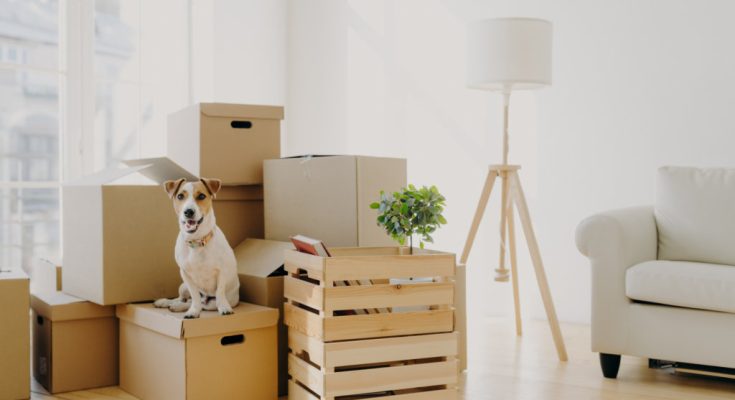Moving can be stressful, and when you add in a beloved collection of houseplants, it can become downright overwhelming. Fear not—we’re sharing real-life tips and tricks from our indoor plant expert to give you the confidence to move your collection with ease.
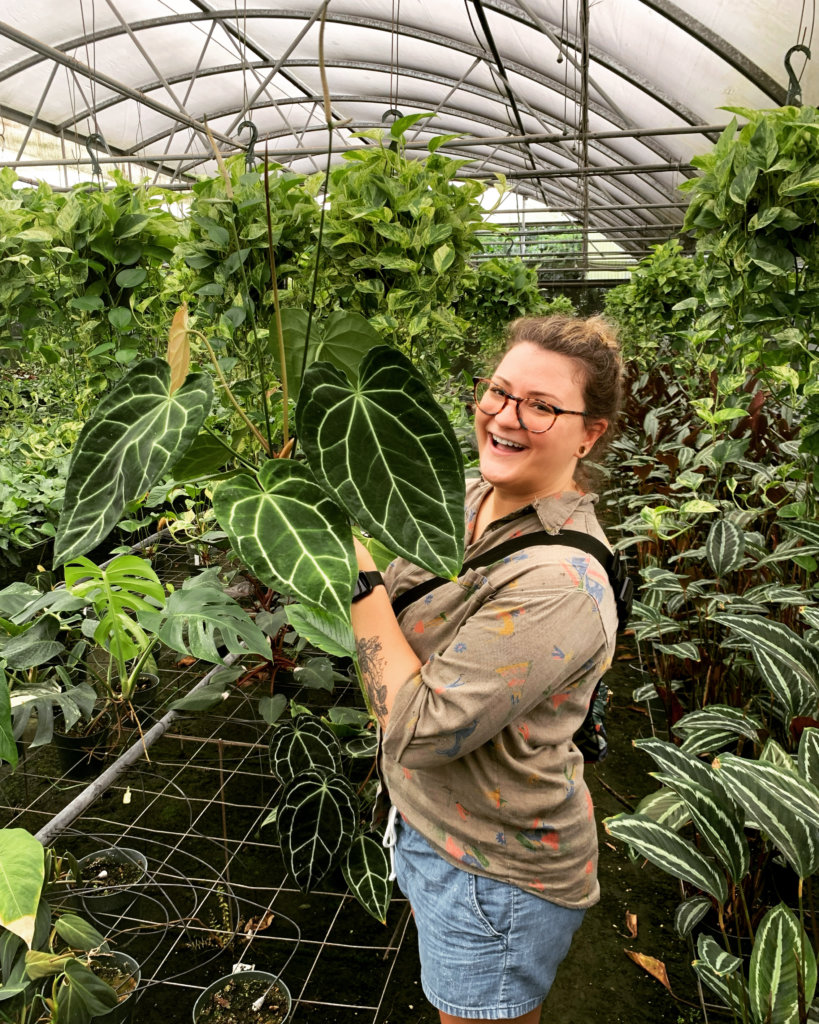
Meet Leah Van Namen, an Indoor Plant Specialist at Bloomscape who does everything from coaching customers on plant care success to advising on cool new plants and curating our indoor care library. Leah’s made a few house moves with plants, both cross-country and across town. With a collection count hovering around 300 (!!), she’s here to impart the wisdom she’s gained from her firsthand experience.
Says Leah, “the #1 thing I’ve learned from moving is to be patient and take a deep breath! Prepare for some soil spillage, broken stems and branches, and torn leaves. It’s all a part of the process!” So as you plan your move, remember to give yourself some grace and don’t expect perfection.
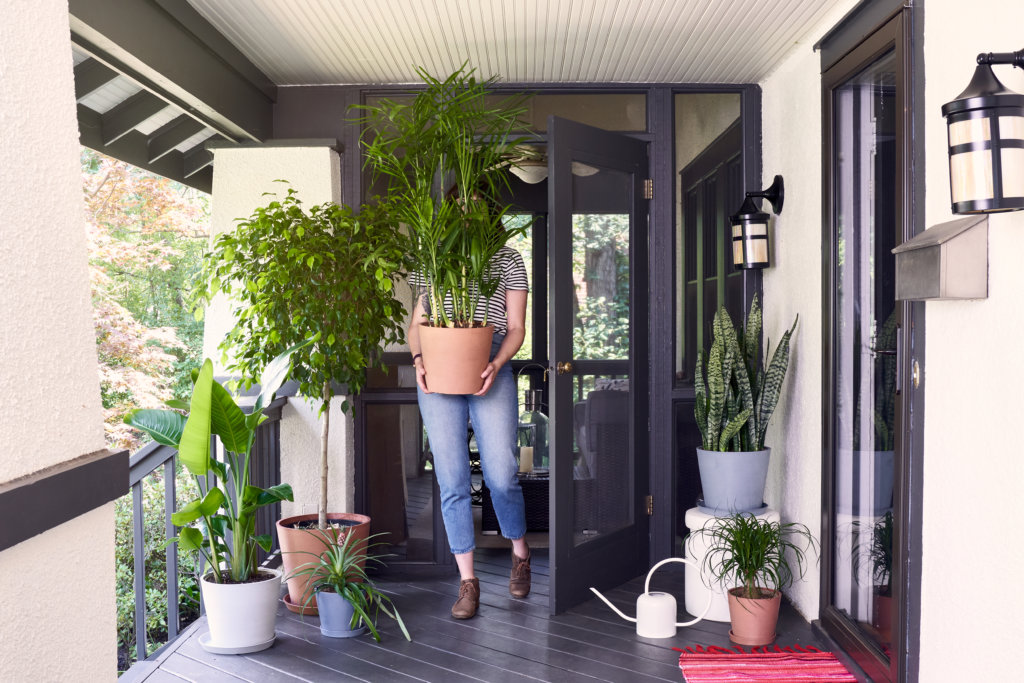
Why Do Houseplants Need Special Attention When Moving?
First, Leah says, it’s important to understand why moving plants to a new location is a task that should not be taken lightly. “For plants, even a minor adjustment like moving from one side of the window to the other is a big change, so a totally different space is a huge deal for them.” A new home can mean new light levels and patterns, along with changes in humidity, airflow, temperature, and more. For cross-country moves, these changes are intensified since geographical conditions can vary so much.
When you factor in the stress that plants experience from the move itself, it’s easy to understand why it’s important to take some precautions. Having a plan can make the move go more smoothly for everyone involved, including your plants!

Moving Tips For Happy Plants
Assess your collection
Packing up to move to a new home is a great time to give away the items you no longer need, be it clothes, kitchen items, or plants. Paring down your plant collection can be tough, but it can lighten your load while bringing happiness to others. Shares Leah, “I channeled my inner Marie Kondo and let go of about 20 plants that didn’t spark joy anymore. They all went to great homes!” To rehome plants, check with friends and family, join a local plant community, or consider selling or giving them away on a local marketplace site.
Prep your plants
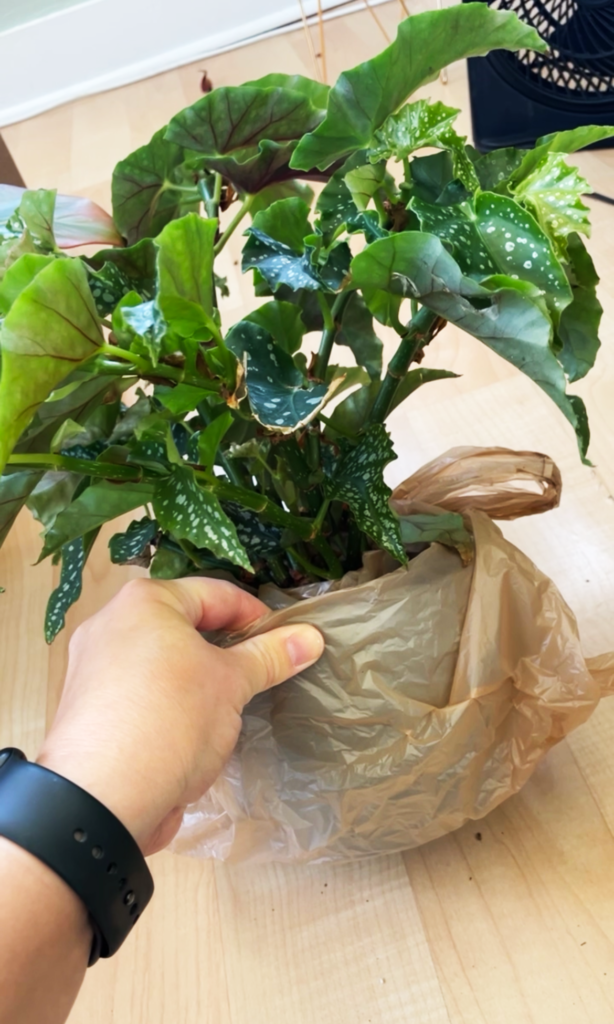
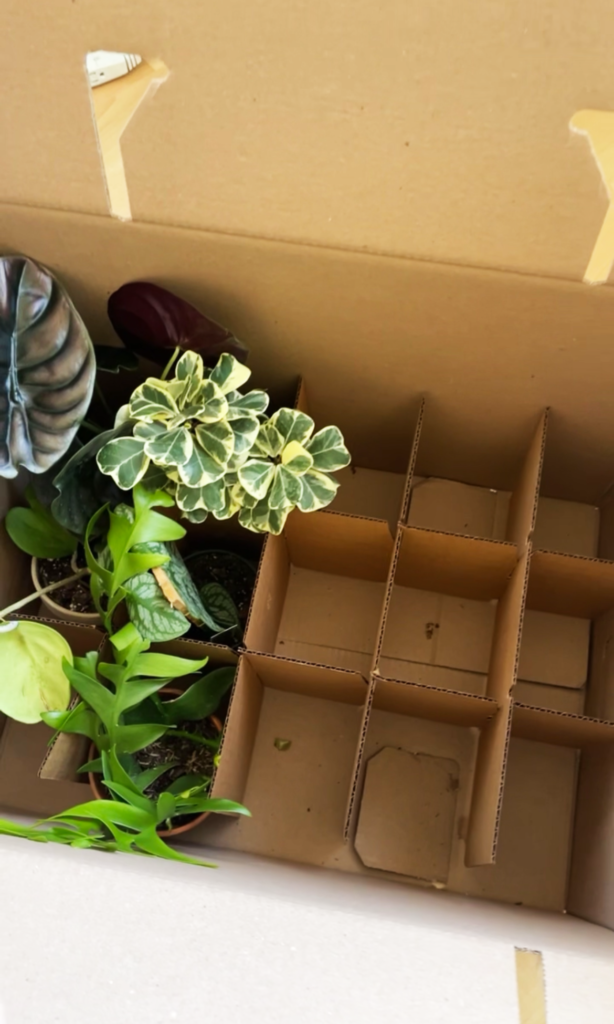
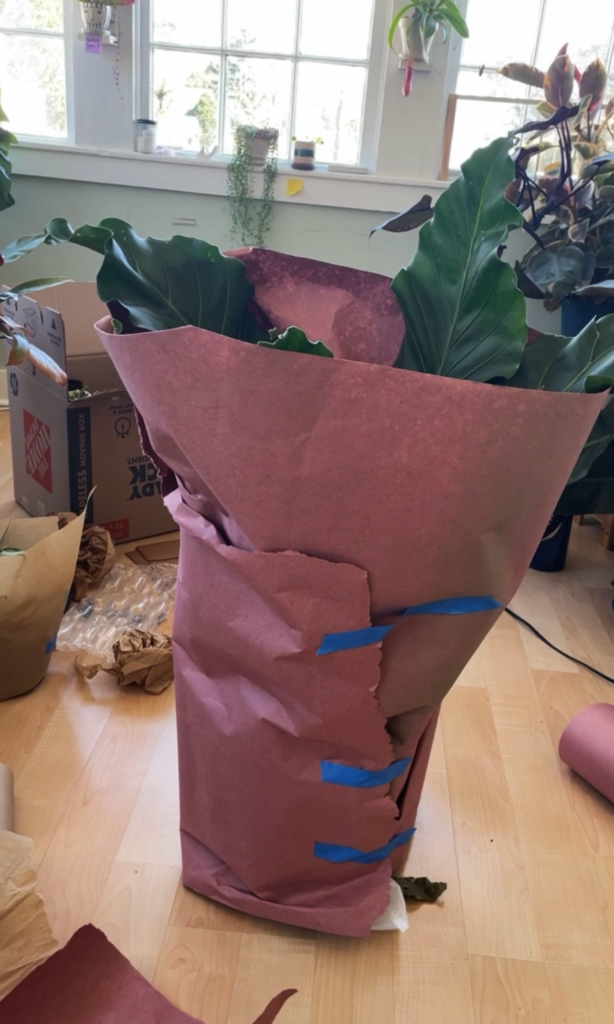
There are a few things you can do ahead of time to make the move go more smoothly. Here are a few of Leah’s top tips:
Make them manageable: Prune plants a few weeks ahead of time. Especially for trailing plants with long, unwieldy stems, this can make them easier to pack and reduce damage in transit. As a bonus, plants respond to pruning by branching out with new growth, meaning they’ll be primed to fill back in once they settle in to their new home. A good rule of thumb is to never remove more than 25% of the plant’s leaves.
Hydrate them: A well-watered plant is a happy plant. Plan to deeply water your plants a few days before moving so the soil isn’t soaking wet the day of. “This is really important if you’re going to be moving long-distance and are not able to check on them frequently,” Leah says.
Pick up packing supplies: Leah shares her hacks for keeping plants and pots secure: “I like to use glassware boxes with cardboard dividers for small plants, and wardrobe boxes for larger plants.” In addition to stabilizing plants in boxes, extra protection can be given by wrapping the foliage in large sheets of kraft paper and using saran wrap, bags, or shipping tape around the pot to keep soil in place. Rolled up towels wedged between pots can prevent them from tipping over during the move.
Make the move
It’s moving day! If you can, it’s ideal to move plants in the car where you can control the climate (fewer temperature fluctuations = less plant stress). In her recent cross-town move, Leah was able to move plants in batches which kept the process more manageable. Here’s her strategy: “I started off by moving all my smaller plants and then worked up to any larger plants that could fit in my car. I eventually needed to rent a U-Haul for the bigger ones, which took a few trips. What a workout!”
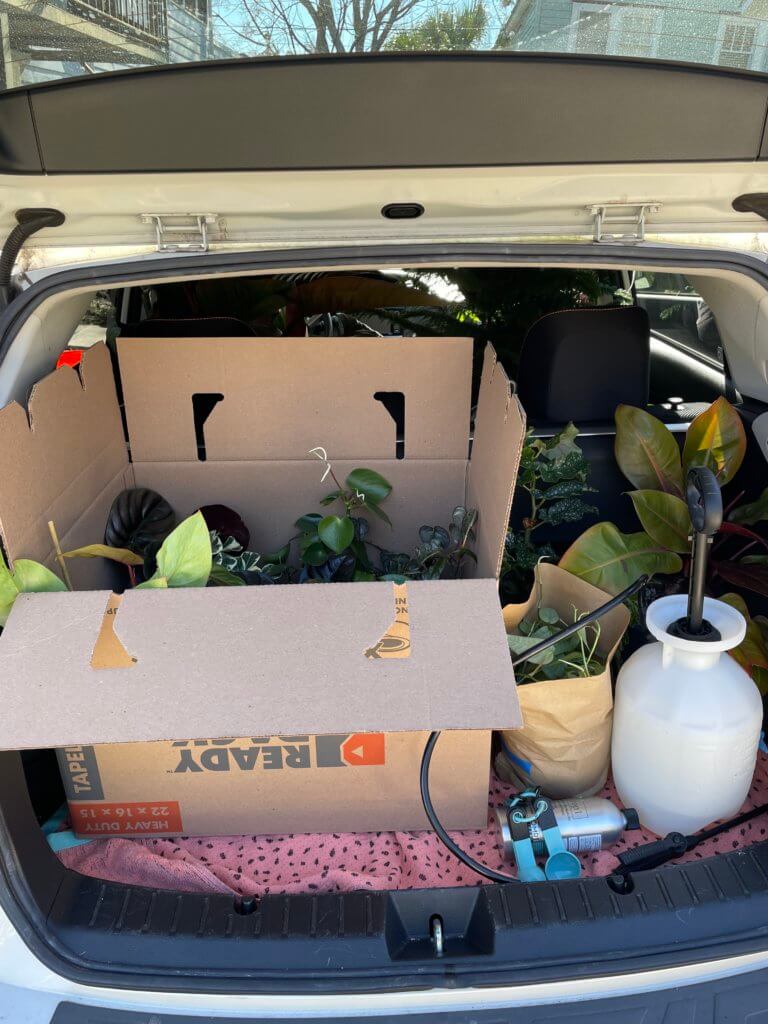
If you’re doing it all in one trip or moving cross-country, not to worry! For smaller collections, make room in your car if possible, where you can easily control the temperature. Cover plants with a lightweight sheet to protect them from glaring sunlight that can scorch their foliage.
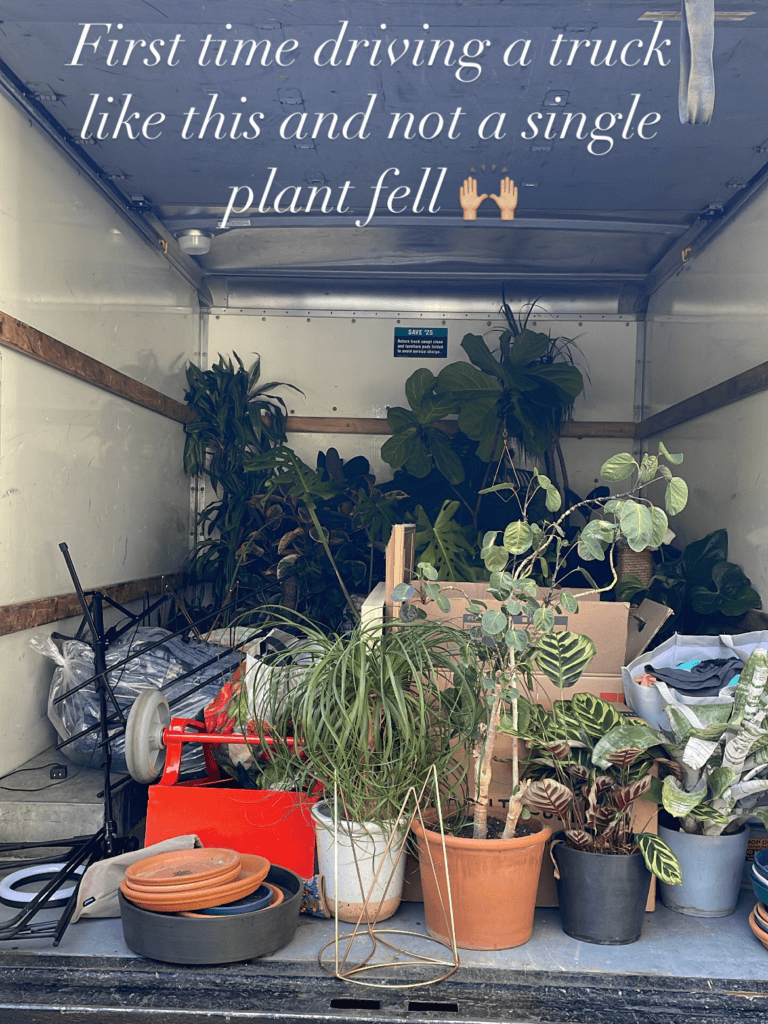
For bigger plants or bigger collections, you might need to utilize a moving truck. Be sure to secure plants and furniture well—even if you intend to drive carefully, there’s always a chance you’ll have to slam on your brakes and you’ll be glad you took the time to pack well!
It’s ideal to move when outdoor temperatures are between 50-70°F, and even then, Leah advises to pay special attention. “I recommend wrapping any delicate foliage and checking on plants every few stops. Temperatures in a box truck can swing drastically in either direction. Be prepared for some sad plants after a long move, but they should perk back with some TLC.”
Can I ship my plants to my new home?
While costs can add up fast with this method, shipping your plants is another option. If you must ship plants, remember they will likely suffer stress but most will recover just fine. Here are a few tips:
- Ensure soil is well-watered but not sopping wet, prune plants back as much as you’re comfortable with, and pack them very securely to minimize movement within the box.
- Insert a bamboo dowel cut to the height of the box into the pot to protect your plant if it gets turned upside down on its journey.
- Add insulation in the winter or cut a few holes to allow airflow in the summer.
- Label your box prominently with “fragile” labels and “this side up” arrows.
- Opt for a quicker shipping speed—the less time in transit, the less stress your plant will endure.
- Once they’ve arrived, bring your plants indoors and unpack them ASAP.
Help plants adjust
Once your plant family has arrived at their new home, it’s time to settle in. It’s totally normal for plants to reduce water intake, slow growth, and even drop a few leaves as they adjust to a new environment. Try to to intervene too much as your plants settle in. Here are a few key items to address:
Take pest precautions: Leah says, “I’m always in an ongoing battle with pests, so after I moved to the new house, I rinsed all my plants off with water and sprayed them with insecticidal soap before they could come inside.”
Scout the perfect spot: It’s best if you can place plants in an area with very similar sunlight exposure. Leah warns that plants might need to be acclimated: “If you’re moving your plant to a higher light space than what you had before, allow it to adjust gradually over the course of a week or two.”
Be mindful of temporary watering changes: Keep in mind that stress and different lighting can change each plant’s watering needs, so always check the soil moisture before watering rather than following your old routine.
Wait to feed: “Hold off on fertilizing for about a month, as fertilizing a stressed plant can do more harm than good,” Leah notes, also mentioning that new growth is a sure sign it’s OK to start fertilizing again.
Be patient: Finally, she reminds us that “some plants will take longer to adjust than others, and patience is key!”
While there’s a lot to keep in mind when it comes to moving with houseplants, a little planning ahead of time can lead to lots of success when moving day finally arrives. And regardless of the outcome, you’ll end up a more experienced plant parent!
Leah shares from her experience: “I found this to be a good learning process and I really got to know each plant individually. Not going to lie; you might lose a plant or two when all is said and done (I did!). It can be tough to say goodbye to a plant, especially if it was out of our control. Be kind to yourself!”
